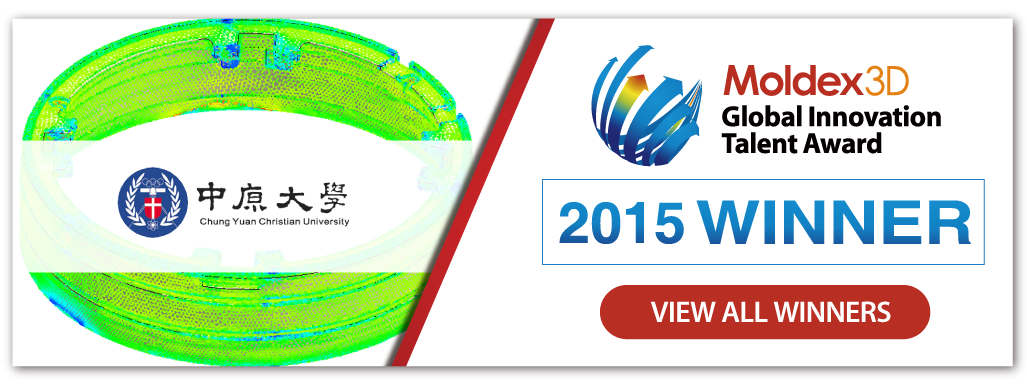
- Customer: Chung Yuan Christian University
- Region: Taiwan
- Industry: Academy & Education
- Solution: Moldex3D Advanced / Fiber Module
MAERC (Mold Automation Education Resource Center) at Chung Yuan University was initiated by Taiwanese Government of Ministry of Education in 2001. The mission of MAERC includes the integration of education and research resources on mold and molding related technology among different organizations: to be the industrial base of research and training support; the promotion of international molding technology communication and corporation via workshop; visiting research exchange and/or joint research; the establishment of e-learning environment; and the promotion of academic-industry cooperation. (Source: https://www.cycu.edu.tw)
Executive Summary
To ensure the highest photography quality of a camera, the cover is just as important as its lens and must meet the dimensional criteria, including roundness. In this study, the roundness of the lens cover made from fiber reinforced material has to be improved by examining multiple process condition variations. Moldex3D was commissioned for the iterative simulation to find the optimized settings.
Following flow and fiber analysis, Moldex3D’s computation result on the product roundness was validated through experiments. The results show that increasing mold temperature may enhance the roundness, and the glass fiber has a bad effect on roundness because its alignment would cause non-uniform shrinkage. To reduce the fiber’s impact on the product roundness, different fiber content and runner system design revision are applied and evaluated through molding simulation. By using Moldex3D, the optimized combination of process conditions, fiber content and runner design are obtained, bringing significant improvement on the product roundness.
Challenges
- Improper roundness of the lens cover that will lead to photography distortion
- Glass fiber could not meet the dimensional accuracy requirement as expected
Solutions
Utilizing Moldex3D simulation solutions to gain a more in-depth understanding of how each processing parameter contributes to the roundness of the camera lens hood and determined the optimum conditions to optimize part performance.
Benefits
- Understand how process conditions affect the roundness of the product
- Improve the roundness by more than 35% through gating location revisions
Case Study
The purpose of this project is to find the best possible combination of process conditions to improve the roundness of the camera lens cover product (Fig. 1). After optimizing the process conditions, MAERC team has to look for the best glass fiber amount contained in the plastic materials.
 Fig. 1 The camera lens cover product in this case
Fig. 1 The camera lens cover product in this case
Moldex3D allows users to evaluate different process conditions and optimize product designs with less effort and cost. In this case, glass fiber added in plastics is expected to reduce the shrinkage for better roundness of a product. However, in many real cases, fiber reinforced material does not help much on dimension accuracy and even seems to make it worse. According to Moldex3D’s simulation results, the fiber alignment is mostly toward Z-axial direction, which would cause non-uniform shrinkage and has bad effects on the roundness. In Fig. 2, the simulation and experimental results have high consistency, and both show the roundness is worse when glass fiber is added.
 Fig. 2 The simulation and experimental results show the roundness is worse when glass fiber is added
Fig. 2 The simulation and experimental results show the roundness is worse when glass fiber is added
Table 1 shows the process conditions variation examination on melt temperature (290~310℃), mold temperature (100~150℃) and injection speed (30~90 mm/s). As shown, the melt temperature and injection speed have minor effects in the final roundness, while higher mold temperature can significantly help reduce the value of roundness, which means better roundness.
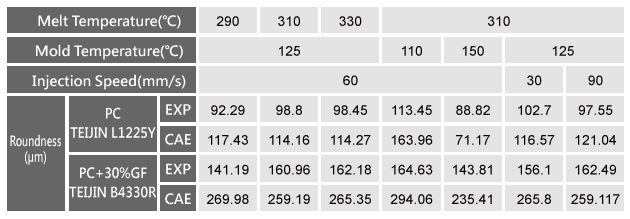 Table1 The process conditions variation examination
Table1 The process conditions variation examination
In Fig. 3, the fiber aligns with flow direction (Z-axial). It will cause non-uniform shrinkage and is the major cause of high roundness.
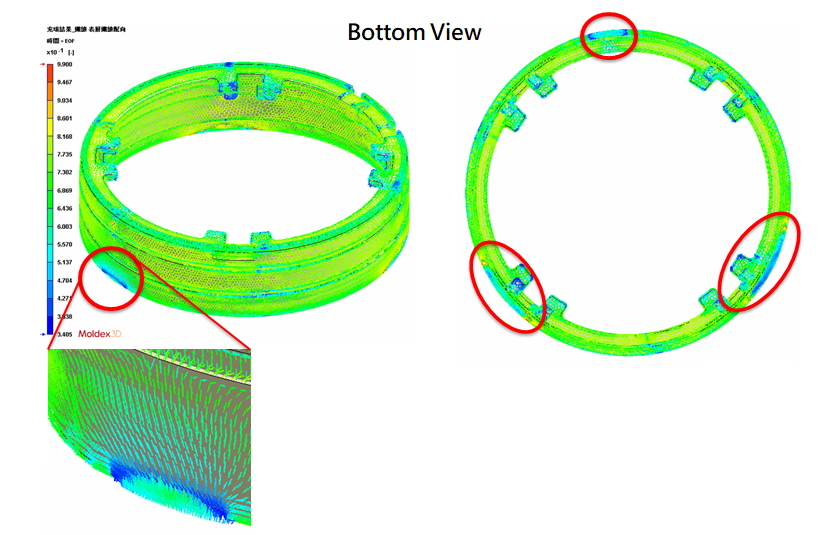 Fig. 3 The fiber aligns with flow direction (Z-axial).
Fig. 3 The fiber aligns with flow direction (Z-axial).
In order to improve flow balance, MAERC made design changes on the 3 gate locations (Fig. 4). The revised design is supposed to have the thick and thin parts be filled simultaneously so that the fiber-induced roundness can be improved.
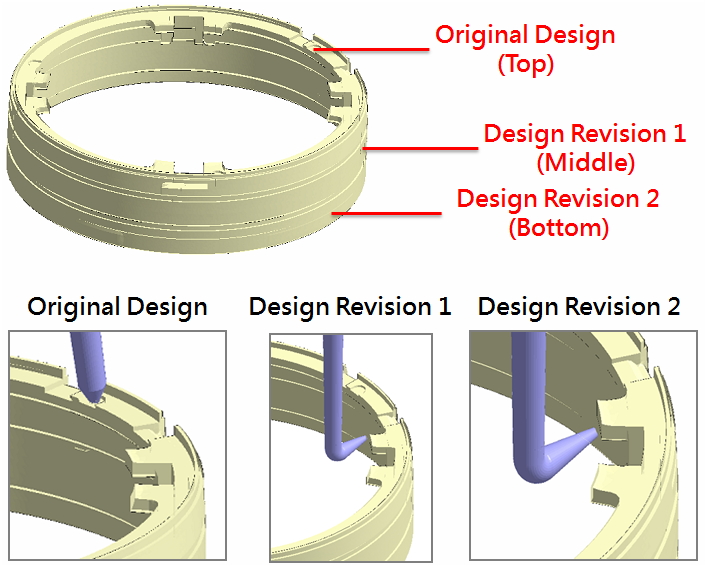 Fig. 4 The 3 gate locations are revised in the design changes.
Fig. 4 The 3 gate locations are revised in the design changes.
After the design changes, the roundness of both materials (PC and PC+30% GF) has been improved by more than 35% as shown in Table 2.
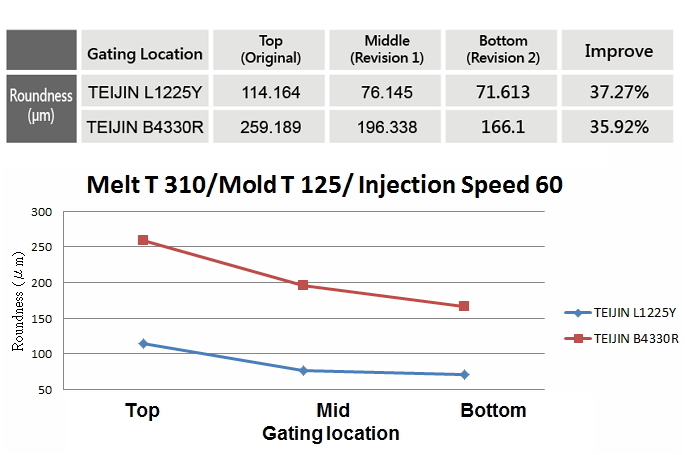 Table 2 The gating location revisions result in better roundness.
Table 2 The gating location revisions result in better roundness.
Results
Through this investigation, MAERC found that the glass fiber cannot improve the roundness for this camera lens cover. In this process, Moldex3D’s simulation results are reliable and highly consistent with the experimental results. Thus, Moldex3D can be a useful tool for further investigating the flow imbalance issues also encountered in this case.
